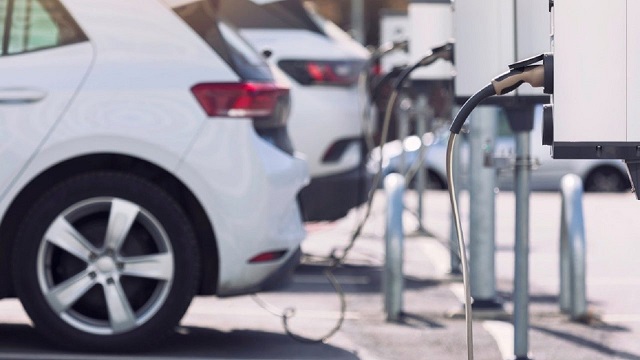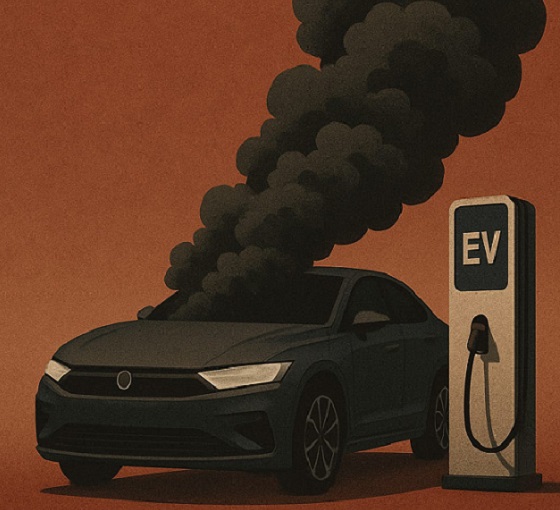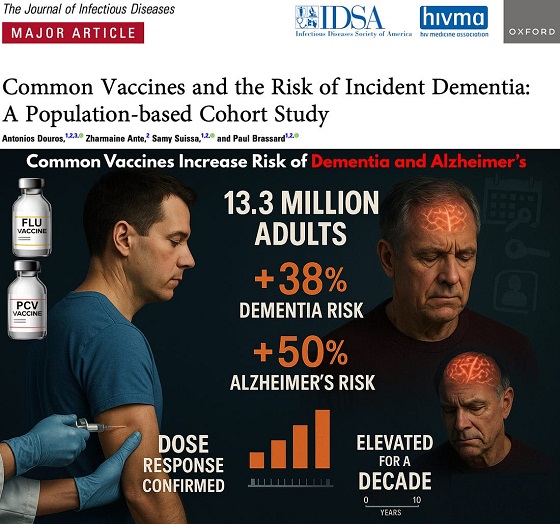Automotive
Energy Notes From the Edge: EV Industry on Limp-Home Mode; Greenpeace’s Firehose Used Against Them and They’re Not Happy

From the Frontier Centre for Public Policy
By Terry Etam
Consumers have spoken, auto makers are responding, and the odd man out are governments still paralyzed in 2019 when euphoric and nonsensical “environmental” policy danced on the supposed grave of last century’s fuel.
Summer was pretty quiet, thankfully, but time for a jolt to get reengaged. There’s no better way than getting yelled at, so today let’s talk about a surefire recipe – Electric Vehicles. Those that love EVs really love ‘em, and to speak ill of them in front of the fans is akin to asking questions about the size of their children’s ears.
EVs have an outsized role in the current cultural and economic landscape, in an odd way. They are seen as the best hope to turn the tide of general consumer emissions. Governments threw their full weight behind them to an astonishing degree, legislating them into projected dominance at an unprecedented (and as it turns out, insane) pace.
What makes EVs such a flashpoint is that they intersect with a bunch of stuff that people hold dear. For some, EV ownership feels like a major personal contribution to the global emissions problem, if owning one entails a significant personal commitment. For many, EVs make total sense if only running around town, or if wealthy enough to keep one in the garage amongst the Astons and Ferraris so as to be well-positioned to make an environmental statement if required. Some love them for their simplicity, with few moving parts and lower maintenance requirements (lower, but not zero). Still others love them because they can fuel up at home, at night. And then there is the cohort that feels their rage against oil companies sated cathartically every time they drive past a gas station, those that believe hydrocarbons bring nothing but death, irrespective of the fact that to that point in their life they’ve brought them everything within their purview, including all the things that keep them alive. Have pity on those people, the neutron-level boxing matches going on between their ears are not to be wished on anyone.
On the flip side of the equation, and what brings it to the news, is the public’s general feeling of “meh” towards them, the 80 percent that constitutes the non-extreme middle. In sane times, that is not a problem; major change happens gradually for such big ticket items, and most get a sense that certain segments of the economy work extremely well as EVs – delivery fleet vehicles, forklifts, urban taxis, etc. Many would drift toward EVs as battery technology improves, as range increases, as price falls. But such a shift would be a multi-generational thing, particularly with the infrastructure changes required.
Most consumers can see that that Total And Rapid EV Domination is not a particularly wise vision, even if governments have declared that that must happen within their dog’s lifespan.
Consumers do know a good idea when they see one, and we can see that by the explosion in popularity of hybrid vehicles – those with internal combustion engines augmented by modest battery packs and electric motors that give a certain emissions-free range before switching to gasoline power.
There’s a reason for this growing popularity – it makes sense on many levels. A hybrid removes some of the major reasons people are reluctant to go full-battery EV (BEV) – range anxiety, cold weather performance, etc. – and, as Toyota has wisely pointed out, hybrids are actually better for the environment in general than mass consumer adoption of EVs.
How can that be, you might wonder. Here is Toyota’s calculation, in what they call the 1:6:90 rule. An excellent write up can be found here, and the gist of it is: Because of immense challenges in finding, developing, mining, and processing critical metals and minerals (hundreds of new mines required globally, with each new mine having weaker grades than before, and with many jurisdictions becoming more hostile towards new mines), it makes more sense to utilize a given BEV’s minerals requirements to construct 90 hybrids instead.
Because many trips are very short, a hybrid can run on electric power for most of them, which is how the spreading-out of these minerals to many vehicles makes emissions reduction sense. Toyota calculates that if the metals/minerals used to construct a single EV were instead used to build 90 hybrids, the overall carbon reduction from those hybrids over their lifetimes would be 37 times that of a single EV (and with that sentence, I don my helmet for the incoming shouts of “Fossil Fuel Shill” – the aforementioned yelling).
Customers are clamouring to acquire hybrids. According to a Car Dealership Guy article (excellent auto news site, from a dealer perspective), in August, 48 percent of Toyota sales were hybrids, Hyundai had an 81 percent increase in hybrids (albeit from a relatively smaller number than Toyota), and Ford saw hybrid sales increase by 50 percent.
Volvo, a company that had pledged to be completely EV by 2030 and thereby banishing the smell of gasoline forevermore from customers’ nostrils, recently backed down from that pledge to announced hybrids would remain part of the equation indefinitely. “Everybody made a lot of assumptions two, three, four, five years ago, and that’s changed,” said Volvo’s CEO.
And then there is the Chinese onslaught of affordable, high-quality EVs that somehow policy planners didn’t see coming. Western countries announced bans on ICE in favour of full-EV by the next decade, and lo and behold, China controls most elements of an EV’s composition, and they took full advantage of that supply chain dominance (plus massive government support) to undercut virtually every western EV maker. Hey, you can’t do that, said US, Canadian, and EU governments, slapping huge tariffs on Chinese made EVs because well, we want to save the environment but not that badly (ultra cheap EVs are one of the few catalysts that would accelerate wide spread and rapid EV adoption among the masses).
Not sure where this goes next. Consumers have spoken, auto makers are responding, and the odd man out are governments still paralyzed in 2019 when euphoric and nonsensical “environmental” policy danced on the supposed grave of last century’s fuel. How they backpedal out of this is anyone’s guess, although there are signs, such as this headline: “Italy leads revolt against Europe’s electrical vehicle transition”. If memory serves from Italian traffic, they seem fine with virtually any sort of vehicular madness, so a automotive revolt in that land is a pretty big deal.
As with so, so many aspects of an energy transition, if the whole process had not been hijacked by zealots, we would be farther down the road, we would have consumers on side, we would have entire industries functioning properly instead of the fiascos we in for example the auto industry, and we most likely would have far less emissions.
Greenpeace USA on the ropes
In the big scheme of things, seeing something that has the words “green” and “peace” in the name fail would be disheartening; no sane person is against either the environment or peace. But put those two words together and you have something else entirely.
In the US, Greenpeace is for once holding the crappy end of the stick that they are used to jabbing at everything they disagree with. US energy pipeline giant Energy Transfer is seeking $300 million in damages for Greenpeace’s role in delaying the Dakota Access Pipeline. An ET victory would and should send shockwaves through the massively well financed protest industry that so far employs every tactic in the book to achieve victory (and by ‘victory’ we generally means ‘obstruction’ or ‘vengeance’ as opposed to any sort of constructive advancement). The big ENGOs spend hundreds of millions on staff and lawyers who literally have nothing to do other than bend society to their will without the bothersome hassle of going through the democratic process. Robert Bryce’s excellent Substack column keeps track of the staggering sums that US ENGOs churn through; Greenpeace US is a pipsqueak ($33 million annual engorgement) compared to locust-lawyer Natural Resources Defense Council’s staggering $548 million. With all that money, these groups construct nothing.)
It is a surprise there haven’t been more of these lawsuits filed by thwarted companies and hydrocarbon producers dragged into court for the sin of providing the fuel that keeps us all alive. It’s really not a hard argument to make; the world as we know it will collapse without hydrocarbon production, so shouldn’t thwarting that production on sometimes very flimsy grounds count for something? Shouldn’t blocking fuel from consumers that desperately need it (countless pipeline battles) count for something?
Greenpeace’s defence is pretty funny; suddenly they are insignificant, claiming to have had only a supporting role in the protests, and that the lawsuit is, the funniest part, an “attack on free speech.” Chaining one’s self (or worse, sending some naive acolyte to chain their selves) to a bulldozer on a construction site is, apparently, ‘free speech’, as is law fare and endless slanderous comments about the people and businesses that bring them the fuel that keeps their unhappy lives going.
Maybe the resurrected body, of which you can be certain will appear if this one is bankrupted, should start off with a bit of soul searching. Maybe peace means everyone working together for a common goal, not dramatizing a villain as the means of motivating the troops. Maybe ‘green’ should mean concern for habitat, concern for air pollution, concern for more intelligent use of resources, concern for the most logical global approach to progress, as opposed to a singular war against the bedrock of our society that it is glaringly obvious we cannot and will not live without.
First published here.
Terry Etam is a columnist with the BOE Report, a leading energy industry newsletter based in Calgary. He is the author of The End of Fossil Fuel Insanity. You can watch his Policy on the Frontier session from May 5, 2022 here.
Automotive
Politicians should be honest about environmental pros and cons of electric vehicles

From the Fraser Institute
By Annika Segelhorst and Elmira Aliakbari
According to Steven Guilbeault, former environment minister under Justin Trudeau and former member of Prime Minister Carney’s cabinet, “Switching to an electric vehicle is one of the most impactful things Canadians can do to help fight climate change.”
And the Carney government has only paused Trudeau’s electric vehicle (EV) sales mandate to conduct a “review” of the policy, despite industry pressure to scrap the policy altogether.
So clearly, according to policymakers in Ottawa, EVs are essentially “zero emission” and thus good for environment.
But is that true?
Clearly, EVs have some environmental advantages over traditional gasoline-powered vehicles. Unlike cars with engines that directly burn fossil fuels, EVs do not produce tailpipe emissions of pollutants such as nitrogen dioxide and carbon monoxide, and do not release greenhouse gases (GHGs) such as carbon dioxide. These benefits are real. But when you consider the entire lifecycle of an EV, the picture becomes much more complicated.
Unlike traditional gasoline-powered vehicles, battery-powered EVs and plug-in hybrids generate most of their GHG emissions before the vehicles roll off the assembly line. Compared with conventional gas-powered cars, EVs typically require more fossil fuel energy to manufacture, largely because to produce EVs batteries, producers require a variety of mined materials including cobalt, graphite, lithium, manganese and nickel, which all take lots of energy to extract and process. Once these raw materials are mined, processed and transported across often vast distances to manufacturing sites, they must be assembled into battery packs. Consequently, the manufacturing process of an EV—from the initial mining of materials to final assembly—produces twice the quantity of GHGs (on average) as the manufacturing process for a comparable gas-powered car.
Once an EV is on the road, its carbon footprint depends on how the electricity used to charge its battery is generated. According to a report from the Canada Energy Regulator (the federal agency responsible for overseeing oil, gas and electric utilities), in British Columbia, Manitoba, Quebec and Ontario, electricity is largely produced from low- or even zero-carbon sources such as hydro, so EVs in these provinces have a low level of “indirect” emissions.
However, in other provinces—particularly Alberta, Saskatchewan and Nova Scotia—electricity generation is more heavily reliant on fossil fuels such as coal and natural gas, so EVs produce much higher indirect emissions. And according to research from the University of Toronto, in coal-dependent U.S. states such as West Virginia, an EV can emit about 6 per cent more GHG emissions over its entire lifetime—from initial mining, manufacturing and charging to eventual disposal—than a gas-powered vehicle of the same size. This means that in regions with especially coal-dependent energy grids, EVs could impose more climate costs than benefits. Put simply, for an EV to help meaningfully reduce emissions while on the road, its electricity must come from low-carbon electricity sources—something that does not happen in certain areas of Canada and the United States.
Finally, even after an EV is off the road, it continues to produce emissions, mainly because of the battery. EV batteries contain components that are energy-intensive to extract but also notoriously challenging to recycle. While EV battery recycling technologies are still emerging, approximately 5 per cent of lithium-ion batteries, which are commonly used in EVs, are actually recycled worldwide. This means that most new EVs feature batteries with no recycled components—further weakening the environmental benefit of EVs.
So what’s the final analysis? The technology continues to evolve and therefore the calculations will continue to change. But right now, while electric vehicles clearly help reduce tailpipe emissions, they’re not necessarily “zero emission” vehicles. And after you consider the full lifecycle—manufacturing, charging, scrapping—a more accurate picture of their environmental impact comes into view.
Automotive
The $50 Billion Question: EVs Never Delivered What Ottawa Promised

Beware of government promises that arrive gift-wrapped in moral certainty.
The pattern repeats across the sector: subsidies extracted, production scaled back, workers laid off, taxpayers absorbing losses while executives collect bonuses and move on, and politicians pretend that it never happened. CBC isn’t asking Justin Trudeau, Katherine McKenna or Steven Guilbeault any questions about it. They are not asking Mark Carney.
Buy an electric vehicle, they said, and you will save the planet, no questions asked. Justin Trudeau and several of his ministers proclaimed it from podiums. Environmental activists, often cabinet members, chanted it at rallies. Automotive executives leveraged it to extract giant subsidies. For over a decade, the message never wavered: until $50 billion in public money disappeared into corporate failures, and the economic wreckage became impossible to ignore.
Prime Minister Mark Carney, himself a spokesperson for the doomsday culture, inherited the policy disaster from Trudeau and still clings to the wreckage. The 2026 EV sales target sits suspended, a grudging acknowledgment that reality refused to cooperate with radical predictions and Ottawa’s mandates. Yet the 2030 and 2035 targets remain federal law, monuments to a central-planning exercise that delivered the opposite of what it promised.
Their claims were never quite true. Electric vehicles were pure good. They were marketed as unconditionally cleaner than conventional cars, a transformation so obviously beneficial that questioning it invited accusations of climate denial. Government messaging suggested switching to an EV meant immediate environmental virtue. The nuance, the conditions, and the caveats were conveniently omitted from the government sales pitch that justified tens of billions of your money into subsidies for foreign EV manufacturing and corporate advancement.
The Reality Ottawa Is Hiding
Research documented the conditional nature of EV benefits for over a decade, yet Ottawa proceeded as if the complexity didn’t exist. Studies from China, where coal dominates electricity generation, showed as early as 2010 that EVs in coal-dependent regions had “very limited benefits” in reducing emissions compared to gasoline vehicles. In Northern China, where electricity generation is over 80% coal-based, EVs could produce lifecycle emissions comparable to or even higher than those of conventional cars. A 2015 Chinese study found that EVs generated lifecycle emissions that were only 18% lower than those of gasoline vehicles, compared to 40-70% reductions in regions with cleaner grids.
Volvo began publishing transparent lifecycle assessments for its first EV in 2019, making it the first major automaker to document the significant upfront emissions from battery production publicly. Their 2021 C40 Recharge report, released during the COP26 climate summit in Glasgow, revealed that manufacturing an EV produces 70% more emissions than building a comparable conventional vehicle. But there are no CBC reports about that. The Volvo report showed that an EV charged on a coal-heavy global grid required 68,000 to 110,000 miles of driving to break even with a conventional car, potentially more than half the vehicle’s usable lifetime. For drivers with low annual mileage in regions with dirty electricity grids, that breakeven point could take six to nine years to reach, if ever.
Battery manufacturing location proved enormously consequential. Production in China, powered by coal, generates 60-85% higher emissions than manufacturing in Europe or the United States. Yet Canadian subsidies flowed to companies regardless of where batteries were made or where vehicles would be charged. The federal government committed over $50 billion without requiring the environmental due diligence that should precede such massive public investment.
The Canadian government never acknowledged Volvo’s findings. Not once. A search of federal policy documents, ministerial statements, and environmental assessments from 2019 forward reveals no mention of the lifecycle complexities Volvo documented. Ottawa’s silence on inconvenient research speaks loudly about how ideology trumped evidence in shaping EV policy.
You want to build a pipeline in Canada. There will be 8 to 10 years of red tape and environmental impact assessments. But if you say you want to make EVs, Laurentian provincial premiers and the feds will bend over backwards. They handed over billions while the economy and social conditions in their cities decayed.
The environmental promise was conditional: clean electricity grids, high annual mileage, manufacturing in regions with low-carbon energy, and vehicles driven long enough to offset the massive carbon debt from battery production. Remove those conditions, and the environmental case collapses. The subsidies, however, remained unconditional.
The Subsidies Flow, The Companies Fail
Corporate casualties now litter the landscape. Northvolt received $240 million in federal subsidies to build a Quebec battery plant before filing for bankruptcy protection in November. Lion Electric, Quebec’s homegrown EV manufacturer, burned through $100 million in government support before announcing massive layoffs and production cuts. Arrival, which secured subsidies for its electric van facility, collapsed entirely, leaving taxpayers with nothing but broken promises.
Stellantis and LG Energy Solution extracted $15 billion, the most extensive corporate handout in Canadian history, for their Windsor battery plant. Volkswagen secured $13 billion for St. Thomas. Provincial governments layered on additional incentives. The public investment dwarfed any plausible return, yet the money kept flowing based on environmental claims the government either never bothered to verify or suppressed from its own documents and reports.
Despite this flood of subsidies and regulatory coercion, Canadian consumers rejected the offering. Even with massive incentives, EVs accounted for only 15% of new vehicle sales in 2024, far short of the mandated 20% target for 2026, let alone the 60% demanded by 2030. When federal subsidies ended in early 2025, sales collapsed to 9%, revealing the limited consumer demand. Dealer lots overflow with unsold inventory. Manufacturers scaled back production plans. The market spoke; Ottawa is only half listening.
The GM plant in Oshawa serves as a cautionary tale. Thousands of jobs lost. Promises of green manufacturing jobs evaporated. Workers who believed government assurances that EV mandates would secure their livelihoods found themselves unemployed as companies redirected production or collapsed entirely. The pattern repeats across the sector: subsidies extracted, production scaled back, workers laid off, taxpayers absorbing losses while executives collect bonuses and move on, and politicians pretend that it never happened. CBC isn’t asking Justin Trudeau, Katherine McKenna or Steven Guilbeault any questions about it. They are not asking Mark Carney.
The Central Planning Failure
The EV disaster illustrates why economies run by political offices never succeed. Friedrich Hayek observed that “The curious task of economics is to demonstrate to men how little they really know about what they imagine they can design.” Politicians and bureaucrats in Ottawa do not possibly possess the dispersed knowledge embedded in millions of individual economic decisions. But they think that they do.
Markets aggregate information that no central planner can access. Consumer preferences for vehicle range, charging convenience, and total cost of ownership. Regional variations in electricity generation and the pace of grid decarbonization. Battery technology improvements and supply chain vulnerabilities. Resource constraints and mining capacity. These factors interact in ways too complex for any cabinet planning committee to comprehend, yet Ottawa presumed to mandate outcomes a generation in advance.
Federal ministers with no experience in automotive manufacturing or battery chemistry presumed to direct the transformation of a trillion-dollar industry. Career bureaucrats drafted regulations determining which vehicles Canadians could purchase years hence, as if they possessed prophetic knowledge of technological development, grid decarbonization rates, consumer preferences, and global supply chains.
The EV mandate attempted to force a technological transition. It was an economic coup. Environmental claims proved conditional at best. Billions in subsidies flowed to failing companies. Taxpayers absorbed losses while corporations extracted rents and walked away. It worked well for the corporations, but the coup failed Canadians and Canadian workers. They are not building back better.
Green ideology provided perfect cover for this overreach. Invoke climate emergency, and fiscal responsibility vanishes. Question subsidies and you’re labelled a denier. Point out that environmental benefits depend on specific conditions, and you’re accused of spreading misinformation. The rhetorical shield, aided and abetted by a complicit media unable to see past its own financial interests, allowed government to bypass scrutiny that should attend any massive industrial policy intervention.
The Trust Deficit
As Canadians learn that EV environmental benefits depend heavily on electricity sources and driving patterns, as they watch subsidized companies collapse, as they discover how thoroughly the promise was oversold and how completely Ottawa ignored contrary evidence, trust in government erodes. This badly needed skepticism will spread beyond EVs and undermine legitimate government functions.
It would be good if future government claims about environmental policy face rising skepticism. Corporations wrapping themselves in green rhetoric may be viewed as con artists. Environmental activists who championed these policies may see their credibility destroyed. When citizens conclude their government systematically misled them about costs, benefits, and basic facts while suppressing inconvenient research, liberal democracy itself suffers. But that may not happen at all in Laurentian LaLa-land or in the Pacific Lotusland.
Over fifty billion dollars are distributed among local and foreign industrialists, while tens of thousands live in tents in Laurentian cities.
The EV debacle demonstrates that overselling policy benefits, suppressing complexity, and using ideology to short-circuit debate produce a backlash far worse than honest acknowledgment of nuance would have. The damage compounds when governments commit billions based on conditional environmental claims they never verified, then remain silent when industry-leading manufacturers publish data revealing those conditions.
The Path Forward
Canada needs a full repeal of the EV mandate and a complete retreat from Ottawa directing market decisions. The EV law must be struck, not merely paused. The 2030 and 2035 targets must be abandoned entirely. No new subsidies for EV production (or any other production). No bailouts for failed battery plants. No additional funds for charging infrastructure. And absolutely no subsidies for conventional or hybrid vehicle production justified by the same environmental complexity that should have prevented EV mandates in the first place.
Let markets determine which technologies Canadians choose. If EVs deliver genuine value for specific consumers in specific circumstances—those with clean electricity grids, high annual mileage, and long vehicle ownership timelines—those consumers will buy them without mandates or subsidies. If hybrids or improved conventional vehicles better serve other consumers’ needs, manufacturers will produce them without government direction.
The aggregated wisdom of millions of economic actors making decisions based on their actual circumstances will produce better outcomes than any planning committee in Ottawa. Some Canadians will find EVs deliver environmental and financial benefits. Others will not. Both conclusions can be correct simultaneously, a nuance Ottawa spent $50 billion refusing to acknowledge.
Markets work because no one has to know everything. Central planning fails because someone must. I wish I could say that Ottawa has learned this lesson the expensive way. Or whether Laurentians will remember it at the next election. Or whether the same politicians and bureaucrats who delivered this disaster will identify the next technology to mandate and subsidize, armed with new promises that reality will eventually expose as conditional at best.
But let’s keep our dreams in check. It seems more likely, given their ideological make-up and propensities for certainty, that low-information Laurentian and Pacific Coast voters will go right for the next green-washed fantasy that the feds and provincial governments will put in front of them, provided it is coiled into a catchy slogan.
Subscribe to Haultain Research.
For the full experience, and to help us bring you more quality research and commentary,
please upgrade your subscription.
-

 Bruce Dowbiggin23 hours ago
Bruce Dowbiggin23 hours agoWayne Gretzky’s Terrible, Awful Week.. And Soccer/ Football.
-

 espionage12 hours ago
espionage12 hours agoWestern Campuses Help Build China’s Digital Dragnet With U.S. Tax Funds, Study Warns
-

 Focal Points3 hours ago
Focal Points3 hours agoCommon Vaccines Linked to 38-50% Increased Risk of Dementia and Alzheimer’s
-

 Opinion21 hours ago
Opinion21 hours agoThe day the ‘King of rock ‘n’ roll saved the Arizona memorial
-

 Agriculture22 hours ago
Agriculture22 hours agoCanada’s air quality among the best in the world
-

 Business10 hours ago
Business10 hours agoCanada invests $34 million in Chinese drones now considered to be ‘high security risks’
-

 Health46 mins ago
Health46 mins agoThe Data That Doesn’t Exist
-

 Economy11 hours ago
Economy11 hours agoAffordable housing out of reach everywhere in Canada







